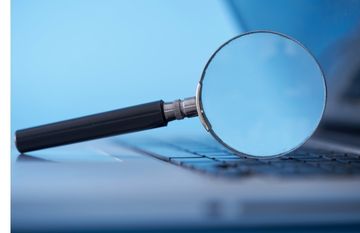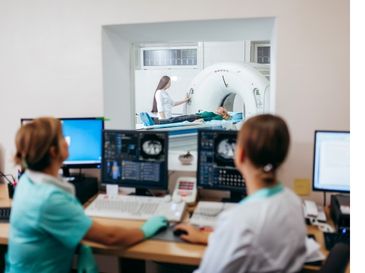
4 Reasons to Use Re-readable Radiation Badges
Have you ever needed to reanalyze a dosimeter to confirm the dose? And have you ever wondered if the dose was received while the badge was actually being worn?
The LANDAUER OSL dosimeters – Luxel®+, InLight®, Escort®, and RadWatch® - are all able to be reanalyzed should the need arise.
OSL and Re-readability
Thanks to the LANDAUER developed technology inside our dosimeter badges, you can rest assured that any unusually high dose readings can be re-read and re-analyzed quickly – with insight.
That’s because these dosimeters all use optically stimulated luminescence (OSL) technology. OSL technology is very sensitive – down to 1 mrem – and uses a non-destructive, light (luminescence) method to read the dose. This dosimeter material is designed to be re-read or re-stimulated if another analysis is needed.
NOTE: Dosimeters made with TLD technology cannot be read more than once. Click here to learn more about the differences between OSL and TLD dosimeters.
Why Reanalyze Dosimeters
 Being able to reread radiation badges is important for many reasons and can help you avoid wasting time, money, and other operations concerns.
Being able to reread radiation badges is important for many reasons and can help you avoid wasting time, money, and other operations concerns.
The benefits of re-readability include:
- Moving or Static Dose: Confirming whether or not the badge was being worn at the time of exposure
- Equipment Downtime: Having to unnecessarily shut down equipment for evaluation
- Staff Scheduling: Having to unnecessarily shuffle staff around to prevent additional dose
- Legal Protection: Confirming dose exposure for a worker who is questioning their health status
Moving or Static Dose
LANDAUER’s exclusive technology allows us to know if a high dose reading is indicative of wearer exposure or not.
 Specifically, a dynamic exposure image indicates the dosimeter was moving at the time of exposure. This implies that the dosimeter was worn at the time of exposure, and the reported dose is valid.
Specifically, a dynamic exposure image indicates the dosimeter was moving at the time of exposure. This implies that the dosimeter was worn at the time of exposure, and the reported dose is valid.
A static exposure image indicates the dosimeter was still - with no movement at the time of exposure. This implies that the dosimeter was not worn at the time of exposure, and an accidental exposure may have occurred.
Other dosimeter technology, like TLD and other types of OSL, don’t reveal motion. It provides only cumulative data, can’t determine a high dose event, and can’t be re-read. LANDAUER analysis data can point to clues around a high dose situation.
Re-analyzing Dosimeters Can Help Prevent Equipment Downtime
If data readings indicate over exposure, it may indicate that the imaging equipment is not working properly. So of course, your first course of action is to shut it down.
This can cause three potentially unnecessary issues:
- Service delays. Such disruption can result in customer dissatisfaction because of test rescheduling, a reduction in business hours, and cause staffing issues because of schedule changes.
- Unexpected expenses. Being unable to confirm how and when a dose was received could cause you to spend money on diagnostic and repair services, only to find out the equipment is fine.
- Revenue interruptions. If you can't perform diagnostics or therapy, it will have an impact on your bottom line.
Re-readable Radiation Badges Can Prevent Staff Scheduling Headaches
 High readings could mean that the participant needs to be moved to a different, non-radiation-facing role for some time. This will prevent them from exceeding radiation ALARA (As Low As Reasonably Achievable) standard limits of 5k mrem a year, as set by the Nuclear Regulatory Commission, or limits as defined by your organization.
High readings could mean that the participant needs to be moved to a different, non-radiation-facing role for some time. This will prevent them from exceeding radiation ALARA (As Low As Reasonably Achievable) standard limits of 5k mrem a year, as set by the Nuclear Regulatory Commission, or limits as defined by your organization.
Staff changes can be highly disruptive to both small and large practices, where scheduling normally can be tricky. Losing a rad tech employee for some time can affect patient care or customer service, and impact overall workflow as other workers need to step in, perhaps with overtime.
Potential Liability Issues Can be Avoided
Re-reading a radiation badge for exposure data validation provides compliance data and may serve as evidence in situations where liability is at question. Data from reanalysis provides factual information that may be needed if an employee or former employee alleges that their current medical or health status – such as a cancer - was caused by workplace radiation exposure.
LANDAUER retains all Luxel+ participant reports for 75 years, along with all Luxel+ high-dose badges. All other Luxel+ dosimeters are retained for two years. Should you require us to reanalyze dosimeters for any reason within that time period, it is done at no cost to you.
Want to learn more? Watch this webinar about the basics of radiation monitoring.
